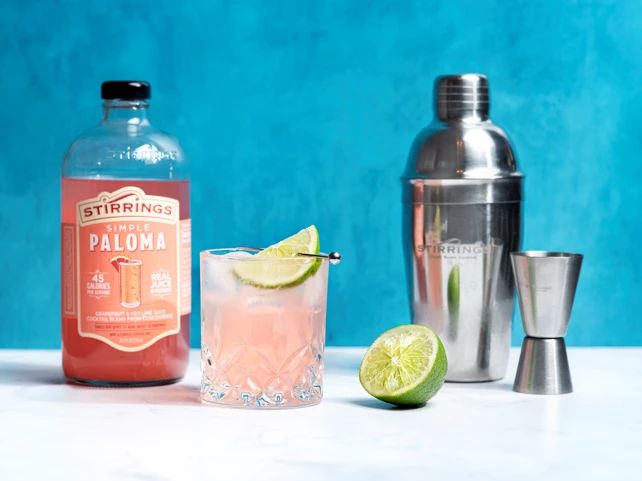How Did Pirates Make Grog?
Grog is a rum-based alcoholic beverage that was popular among sailors and pirates in the 17th-19th centuries. It typically consisted of a mixture of rum, water, citrus juice, and sugar. Grog was an important part of life at sea for several reasons:
It provided vital hydration, as drinking straight alcohol like rum would dehydrate sailors in the hot climates they navigated. The addition of water made the rum safer to drink all day. According to The History of Grog, grog’s water content helped fight scurvy and other nutrition-deficiency diseases common on ships.
The rum provided an alcohol boost to help numb the tough conditions aboard ships. The citrus juice added vitamin C and helped make the rum more palatable. Sugar countered the bitterness of the lime juice.
Grog was made by mixing a half-pint or more of rum with equal parts water, plus lime, lemon, or grapefruit juice. Sugar and cinnamon were also sometimes added. The concoction was then stirred or shaken until fully mixed together into a consistent grog.
Origins of Grog
The term “grog” originated in the British Royal Navy in the 1740s. According to the Encyclopedia Britannica, Admiral Edward Vernon of the British navy was nicknamed “Old Grog” because he wore a grogram cloak to stay dry (Encyclopedia Britannica). British sailors rationed with rum began calling their daily rum rations “grog” after Vernon’s nickname.
Admiral Vernon instituted adding water to the rum rations on British navy ships in order to prevent drunkenness among sailors. As described in an article on SailorJerry.com, Vernon ordered the ration of rum be diluted with water in a 4:1 ratio and split into two servings per day instead of one. This order led to the creation of grog as it became known (SailorJerry.com).
The term grog eventually spread beyond the British navy to refer to any alcoholic beverage, especially rum mixed with water. Over time, the meaning expanded to represent a slang term for alcohol in Australia and New Zealand.
Ingredients
Grog was made from a simple combination of ingredients that were readily available to sailors and pirates in the 17th-18th centuries. The main ingredient in grog was rum. Sailors were given a daily ration of rum, which was one of the most common spirits found onboard ships at the time. The rum used was often a dark or navy rum that had a high proof. Some common brands used included Barbados rum and Jamaican rum (1).

In addition to rum, the other key ingredient in grog was lime juice. Fresh limes were brought onboard ships to provide vitamin C and prevent scurvy. Squeezing lime juice into the rum helped cut the harsh taste and mellow it out. The lime juice introduced some sweetness and acidity to balance the strong spirit. Other ingredients like sugar or molasses were sometimes added as sweeteners as well (2).
Beyond the core rum and lime juice, spices and flavors could be added to create different variations of grog. Cinnamon, nutmeg, cloves and ginger were popular spices blended in. Sugary flavors like brown sugar or honey were also common additions. The possibilities were endless based on the ingredients sailors had on hand.
Brewing Process
The key aspect of brewing grog was diluting rum with water. Pirates followed the traditional naval grog ration which was a 1:4 ratio of rum to water. The rum was issued from the ship’s store and then mixed with water, usually 4 parts water to 1 part rum.
After diluting the rum, other ingredients like lime or lemon juice, brown sugar, and nutmeg were added for flavor. The lime juice in particular helped prevent scurvy which was a common affliction of sailors at the time. The juice provided needed vitamin C. Typically around 1 ounce of lime juice was added per serving of grog.
The mixture was then stirred thoroughly to fully dissolve the sugar and integrate the ingredients. Some recipes call for heating the grog, while others prefer it served cold. After mixing, the grog was ready to be distributed to the crew.
Overall, the simple process allowed pirates to transform the harsh rum into a more palatable and hydrating drink. The added ingredients also provided nutrients while making the grog more enjoyable to drink.
Alcohol Content
Grog had an extremely high alcohol content, with some recipes containing as much as 75% alcohol by volume (What is the ABV of Grog? – r/Seaofthieves). The rum used to make grog was very potent, often containing 40-75% alcohol.
Drinking undiluted grog could have serious effects due to the high alcohol content. According to Wikipedia, sailors were given a ration of grog which consisted of four parts water to one part rum in order to prevent them from becoming dangerously intoxicated. The rum had to be diluted because of its strength.
Watering down the rum was vital both for the health and safety of sailors. The high alcohol content of pure rum could make sailors drunk to the point of incapacitation. By regulating grog rations and requiring the rum to be diluted, officers could control alcohol consumption on board ships.
Consumption
Grog was the primary beverage consumed by pirates and sailors aboard ships in the 17th and 18th centuries. It was given as part of the daily liquid rations, and pirates would consume it frequently throughout the day.
Pirates were allocated up to a gallon of grog per day, which would be carefully measured out by the quartermaster or ship’s cooper. The grog ration was seen as an entitlement and was carefully guarded by pirates. It was common for two or three servings of grog to be provided throughout the day.1
Grog was drunk in a communal setting, with pirates gathering around the grog tub at designated times. The dispensing of grog sometimes involved ceremonies or rituals, like the issuing of toasts before drinking. Consuming grog together strengthened social bonds and morale among the pirate crew.
Pirates would frequently get drunk on grog, especially after long voyages at sea. The effects of grog provided a release from the tedium and harshness of life at sea. Rowdy drunkenness was common among pirate ships after copious amounts of grog were consumed.
Effects on Health
Drinking grog had a mix of positive and negative effects on the health of sailors:
Dehydration was a major side effect of heavy grog consumption, as the alcohol caused fluid loss. This was compounded by the limited fresh water supplies on ships, making hydration already difficult. According to Wikipedia, some sailors would even save up multiple days worth of grog rations to drink all at once, worsening dehydration.
However, the addition of lime juice provided some health benefits. Citrus fruits like limes are excellent sources of vitamin C, which helped combat scurvy, a devastating nutritional disease plaguing sailors. The British Navy in particular began adding lime juice to grog in the 19th century, eradicating scurvy outbreaks.
Lastly, the sharing of grog rations from a common scuttlebutt or barrel spread infectious diseases like typhoid fever and dysentery among sailors in close quarters. These illnesses were serious threats onboard crowded ships with poor hygiene and no knowledge of germ theory at the time.
Role on Pirate Ships
Grog played an important role on pirate ships. It was given out as part of the regular rations for sailors. Pirates would receive a half-pint or pint of grog per day depending on rank [1]. This grog ration provided compensation for their dangerous work and harsh shipboard conditions.
Additionally, grog was used by captains as an incentive and disciplinary tool. Extra grog rations would be given as a reward for good performance, while rations could be withheld as punishment. The prospect of grog encouraged sailors to work efficiently and obey orders.
Drinking grog also had important social functions on pirate ships. It provided a daily break from work where pirates could bond and build camaraderie. The grog ration served as a focal point for social gatherings and helped maintain morale. However, overconsumption often led to drunkenness and fighting.
Comparison to Other Beverages
Grog differed in several key ways from rum, despite both being popular alcoholic drinks for pirates and sailors. Rum was usually distilled from molasses or sugarcane juice, whereas grog was more of a mixed drink containing rum diluted with water or citrus juice. While rum had around 40% alcohol content, grog’s alcohol percentage was much lower due to the dilution. Grog was not a specific spirit itself, but rather a mixture of rum and other ingredients.
Grog shared some similarities with punches popular in taverns during the 17th and 18th centuries. Both contained citrus juices like lime and were served communally in a bowl. However, punches were often made with brandy or other spirits besides rum. Grog was unique for its simplicity – the combination of just rum and water or citrus made it easy to produce onboard ships. The poor quality rum given to sailors was masked by dilution and citrus in grog. Grog’s portability and quenching nature also set it apart from many other drinks. While wine, punches, and neat rum were served in taverns, grog was specially devised for pirates and sailors out at sea.
In summary, grog occupied a unique place among alcoholic beverages of its era due to the use of rum, citrus, and ample water dilution. It was designed for convenience and hydration onboard pirate ships in a way that other drinks were not.
Modern Grog Recipes
Modern versions of grog have evolved over the years and often use more readily available and updated ingredients. While traditional grog was made simply from rum diluted with water or citrus juice, modern grog incorporates additional flavors.
A popular modern recipe calls for mixing 1 ounce of lime juice, 1 ounce of brown sugar, 1 ounce of dark rum, and 4 ounces of water in an old fashioned glass (Source: https://www.thedrinkblog.com/grog/). This creates a drink with a sweeter, more balanced taste compared to the harsh traditional grog. The lime adds a bright, tart note while the brown sugar provides sweetness to counter the strong rum. The alcohol content is lower, making it more palatable.
There are many variations of modern grog using ingredients like ginger beer, spices, honey, or other citrus juices. While traditional grog was primarily a naval drink, modern grog can be found in many bars and restaurants, especially those with a tropical or nautical theme. It’s become a popular cocktail option for those looking to channel a pirate drinking experience without the harsh bite of historical grog.



